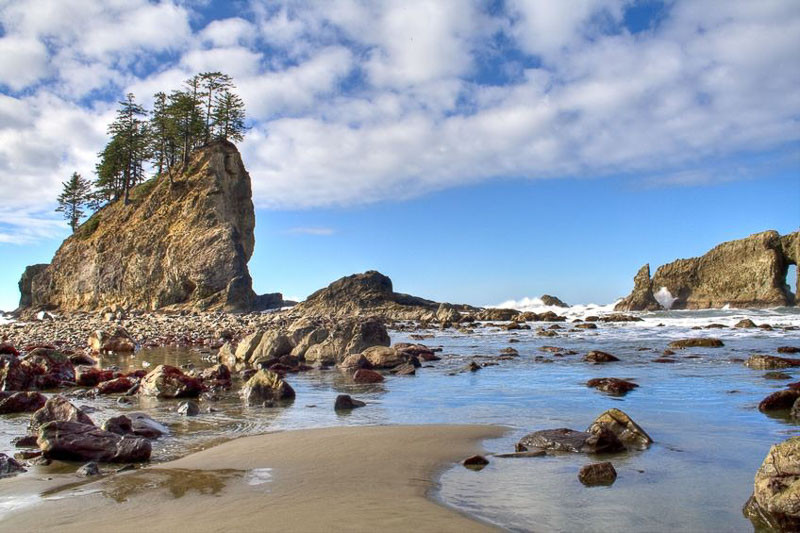Pacific Northwest Native Plants
The Pacific Northwest region, encompassing parts of the United States and Canada, hosts a diverse array of native plants adapted to its varied climate and topography. These plants play an integral role in local ecosystems, providing food and habitat to indigenous fauna.
- At the heart of these ecosystems are towering evergreen trees like the Douglas Fir, Western Red Cedar, and Sitka Spruce, whose dense canopies create a microclimate for understory plants. Beneath these giants, understory trees and shrubs like the Vine Maple, Oregon Grape, and Salal thrive, adding to the region’s lush greenery.
- In open, sunny meadows, wildflowers such as Camas and Lupines showcase a burst of colors from spring to early summer. These blooms attract pollinators, contributing to the biodiversity of the region.
- In coastal areas, Sea Thrift and Beach Strawberry are common. These hardy plants are adapted to salt spray and sandy soils, stabilizing dunes and coastal bluffs.
- In wetlands and along riverbanks, plants like the Western Sword Fern, and Red Alder are prevalent. These species are adapted to waterlogged, nutrient-rich soils and often play a role in water filtration and erosion control.
As climate change impacts become more significant, these native plants are instrumental in maintaining the region’s environmental health. They are adapted to local conditions, requiring less water and care than non-native species. They can aid in fire resistance and soil conservation, thus enhancing the resilience of the Pacific Northwest’s ecosystems.




